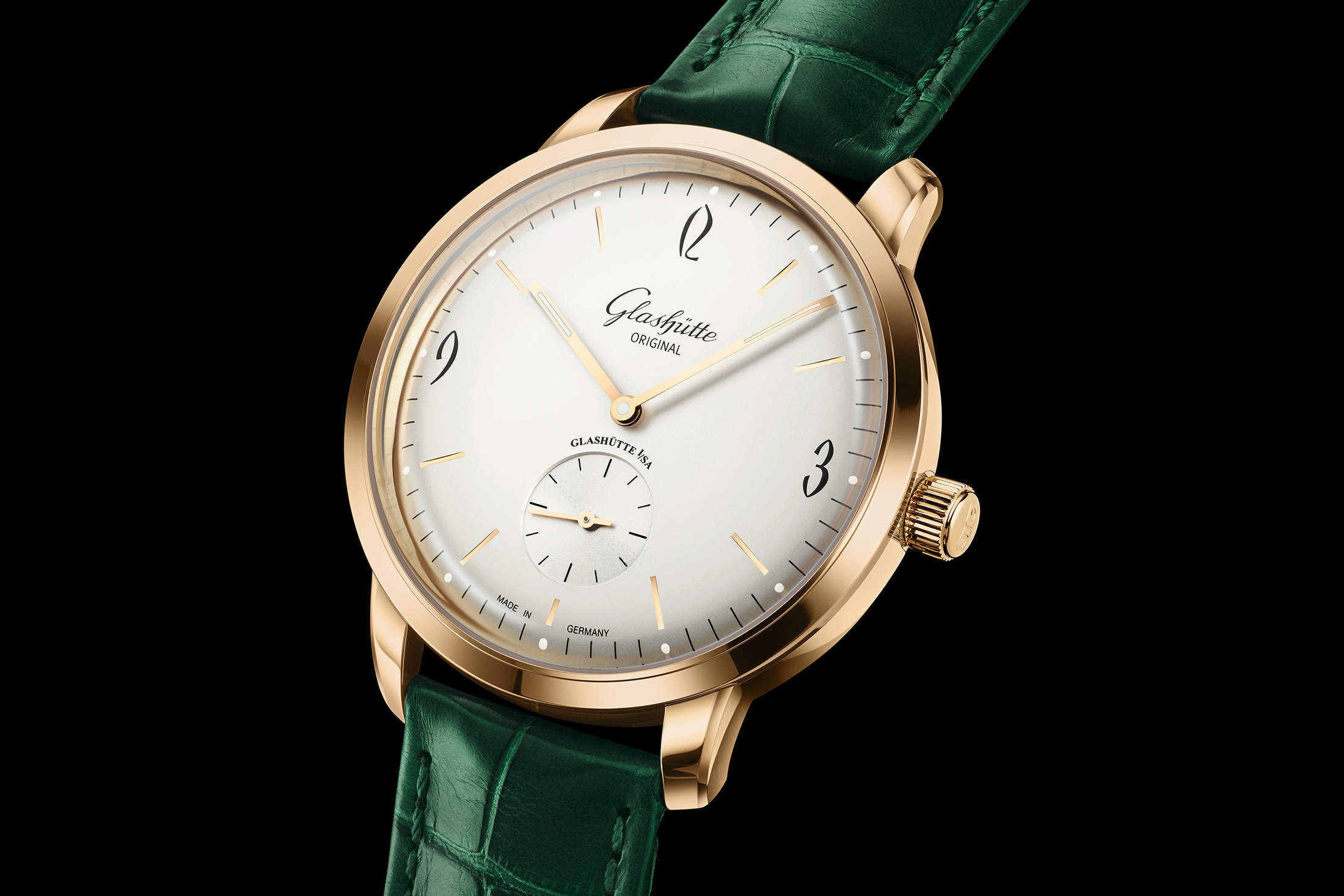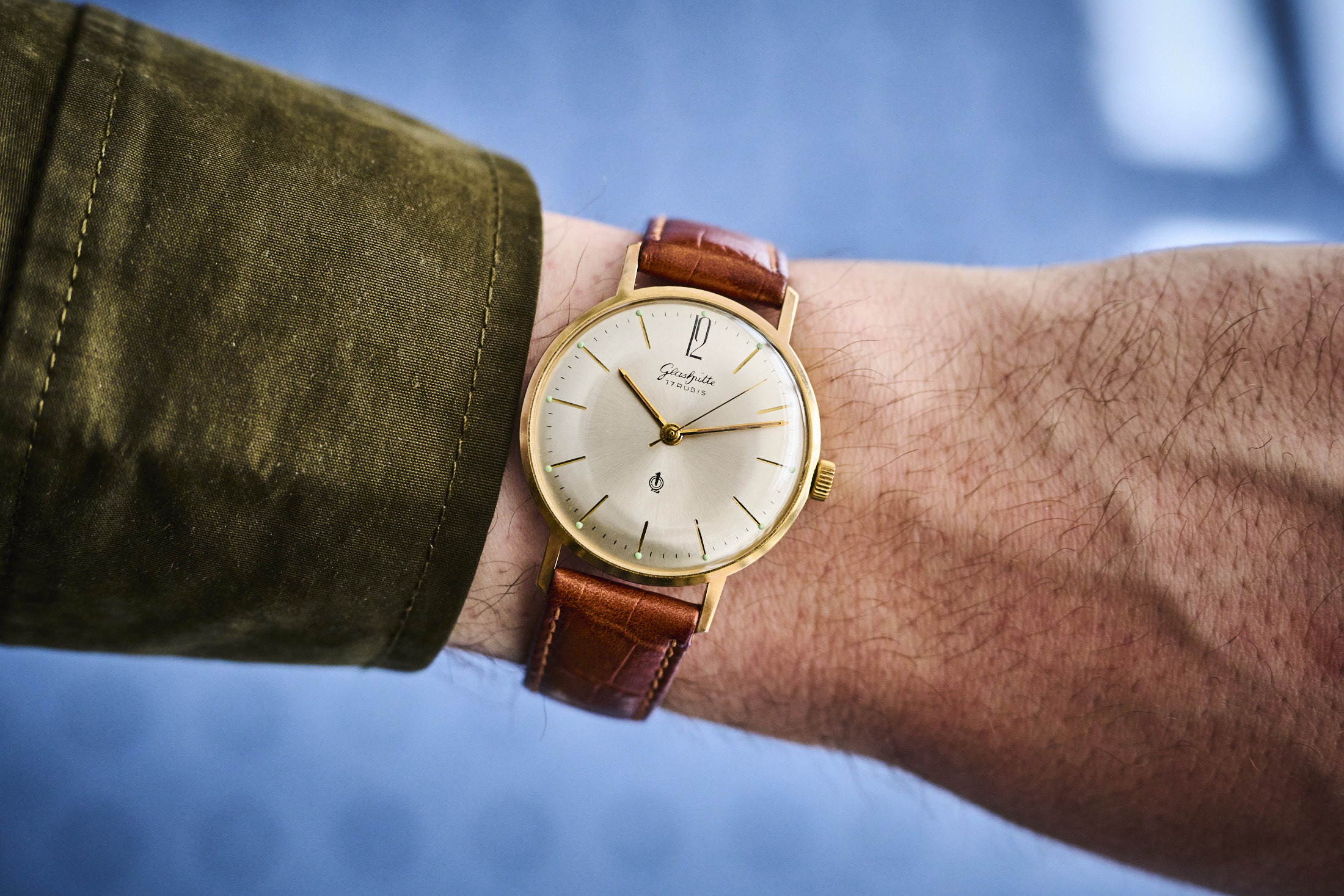ADVERTISEMENT

ADVERTISEMENT
Early last month I had the chance to finally visit Glashütte, the cradle of German watchmaking, and finally got to see for myself the magic that is this tiny town of incredible horology. After years of reading about it (and it's fascinating history), it never really sunk in how small and alive that history is today. Just last week Glashütte Original released its new Sixties Small Seconds model, a 42mm rose gold dress watch. But I'm guessing quite a few people don't know how much the watch – and the brand itself – harkens back to the town's history.
Welcome to Glashütte. How many brands can you spot in this photo?
Let's begin with the Vallée de Joux in Switzerland, a place with a palpable feeling of history – a history that follows you as you drive through all the small towns and see names that have been associated with watchmaking for hundreds of years. Now take that feeling and condense it down such that when you stand on one street you can see the headquarters of at least four major watch brands. That's Glashütte.
While visiting Glashütte Original's impressive manufacturing facility, I continually heard taglines that allude to "being the Original." And while that mostly appeals to a sense of independence and uniqueness the brand hopes you feel when you wear its watches, there's something far more literal about the name.
The large grey and white building in the lower left is Glashütte Original, with A. Lange & Söhne to its right and Nomos across the street.
Glashütte Original is the byproduct of a new brand created in 1994 after the fall of the Berlin wall and German reunification. If you pay close attention to the dates on which most Glashütte-based brands were founded (or more accurately re-founded), many of them fall around this timeframe. That's because, during the days of the German Democratic Republic, famous German watch brands like Tutima, A. Lange & Söhne, and others were united under one umbrella called Glashütter Uhrenbetriebe or GUB.
ADVERTISEMENT
In the final days of World War II, Glashütte was nearly leveled by Allied bombing. What remained of the town's watchmaking equipment was later claimed under reparations for the war – leaving little behind. And while the institutional knowledge of the surviving watchmakers allowed the reconstruction of that equipment, the GDR allowed only one state-run horological company – GUB – to operate.
A GUB watch with "Made in GDR" caseback.
Through the years, the GUB brand continued its focus on mechanical watches, stuck behind the Iron Curtain but protected in some ways from the Quartz Crisis. While the quality is not near the level brands like Patek were producing in the era, they've developed a cult following. Prices are affordable, sometimes as little as a few hundred bucks.
It's obvious why Glashütte Original might want to distance themselves from these lower-quality watches – these days GO produces phenomenal quality watches with wonderful finishing at a significantly higher price than the GUB watches. But this history is inextricably tied to the brand. Back in the days before GUB, "Glashütte Original" was used to differentiate the watch from inferior copies in the same style. But when GUB was eventually dissolved, Glashütte Original was formed, with 72 employees of the old GUB company and much of its original machinery. Now, it's a closer representation of what "Original" means – GO is the closest thing to an unbroken lineage of Glashütte watchmaking. And the new Sixties Small Second is a testament to that connection.
A selection of GUB watches, bookended by two 1960's models.
A new SeaQ (left and right), with the Spezimatic at center.
I didn't particularly love the large arrow on the minute hand until I saw a vintage version. Then it all clicked.
The Q certification on the dial.
While in Glashütte, I saw a few watches from the GUB era belonging to an employee of Glashütte Original. Among them were a few that drew the most obvious connection between what Glashütte Original is making now in their "Vintage" and "SeaQ" lines and those difficult days of the GDR era. One, a Spezimatic, looks very similar to the current SeaQ line. In fact, the "Q" certification on the dial (where SeaQ gets its name) was a certification of quality in the GDR and could be found on everything from these watches to toasters and has continued on through GO's use. Another from the 1970s looked very similar to – you guessed it – the Seventies watches in the modern collection. But the two bookending the collection above show that the new Sixties Small Second is a souped-up (and well-finished) reference to the past.
Courtesy Glashütte Original
Okay, I get that this isn't a brand-new take for Glashütte Original. The brand has been doing Sixties watches for some time, but it's a history worth revisiting, especially when the company has done something that I think is particularly attractive with their new take.
ADVERTISEMENT
While the original Sixties watches with center seconds may stay more true to the original vintage watches, the new small-seconds watch has a more refined classic style for my taste. When I saw the watch in person last month (though sadly wasn't able to photograph it), the thin bezel and short curved lugs fit my wrist reasonably well despite the 42mm size being slightly larger than what I'd consider a traditional dress watch. The rose-gold case trended more yellow than some brand's mix. That's a good thing in my opinion, as some brands seem to have largely abandon yellow-gold cases, which are my preference.
Courtesy Glashütte Original
That said, for the average person the watch is big at 42mm and a little thick at 12.4mm, partially impacted by a domed sapphire crystal caseback, and I really hope that GO spends some time shrinking their movements, which have become a limiting factor for size. But Glashütte Original's movement finishing isn't talked about frequently enough, in my opinion, and while the brand didn't include photos of the movement I hope you'll trust me when I say the finishing on the automatic Calibre 39-60 (a new version of the Caliber 39) is fantastic. You get bevelled edges and polished screws, a skeletonized "GO" rotor, gold accents, and a 40 hour power reserve with the new movement.
As always, the details make the difference. The font for 3, 6, and 12 is one of my favorite (and most anachronistic) fonts being used today. The crown as well might seem a bit aggressive and overbuilt but if you look back at the old GUB watches you'll notice it's very similar, with deep knurling and a pretty squared-off edge. On some of those old watches the crown is so sharp still it could cut through a steak. Now Glashütte Original has toned it back just a touch, to make it useful for a dress watch.
Courtesy Glashütte Original
The vintage 1960's GUB watch
The new watch comes in at $16,000, which might be a tough price for what I consider to be an under-appreciated brand. But part of that is the lack of a broad understanding of the brand's history. I'd encourage you to check it out in person, as my gut says it will remain a mainstay classic for the brand for quite some time.
The Basics
Brand: Glashütte Original
Model: Sixties Small Seconds
Reference Number: 1-39-60-01-01-04
Diameter: 42mm
Thickness: 12.4mm
Case Material: 18k rose gold
Dial Color: Galvanized silver with surface oplain finish
Indexes: Markers milled, printed scales
Lume: Luminous dots at the end of the markers
Water Resistance: 30m
Strap/Bracelet: Green Louisiana Alligator leather strap
The Movement
Caliber: Caliber 39-60
Functions: Hours, minutes, seconds
Power Reserve: 40h
Winding: Automatic
Frequency: 28,800vph
Additional Details: Glashütte three-quarter plate with stripe finish, Swan-neck fine adjustment, Skeletonized gold rotor with double-G symbol
Pricing & Availability
Price: $16,000
Availability: Now
Limited Edition: No
For more, click here.
















































Top Discussions
Introducing TAG Heuer Refreshes The Aquaracer Professional 300
Auctions Sylvester Stallone's Patek Philippe Grandmaster Chime Leads New York Auction Week
Introducing Oris Turns The Divers Sixty-Five All-Black For Its 2024 Hölstein Edition